
The Solar-Terrestrial Centre of Excellence (STCE) is a collaborative network of the Belgian Institute for Space Aeronomy, the Royal Observatory of Belgium and the Royal Meteorological Institute of Belgium.
 |
Published by the STCE - this issue : 4 Jul 2014. The Solar-Terrestrial Centre of Excellence (STCE) is a collaborative network of the Belgian Institute for Space Aeronomy, the Royal Observatory of Belgium and the Royal Meteorological Institute of Belgium. |
| Archive of the newsletters | Subscribe to this newsletter by mail |
Late on 26 June, an eruption took place in an active region just behind the Sun's east limb. The event led to some spectacular images of the associated coronal mass ejection (CME) and post-flare coronal loops.
The eruption started around 21:00UT, and the expanding CME can be seen in extreme ultraviolet (EUV) in SDO, STEREO-B and PROBA2 imagery, as indicated with the dashed orange lines in the images underneath.
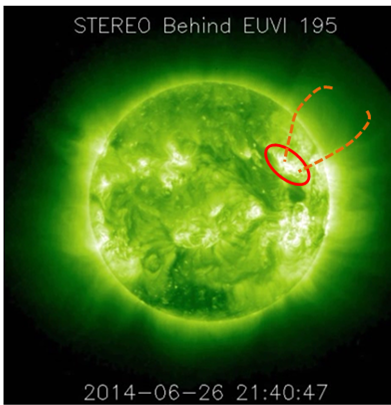
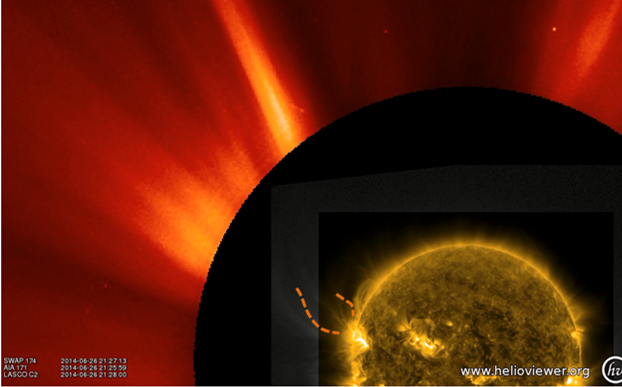
Despite being well behind the Sun's east limb, the region managed to produce a long duration C1.6 flare peaking at 01:14UT on 27 June.
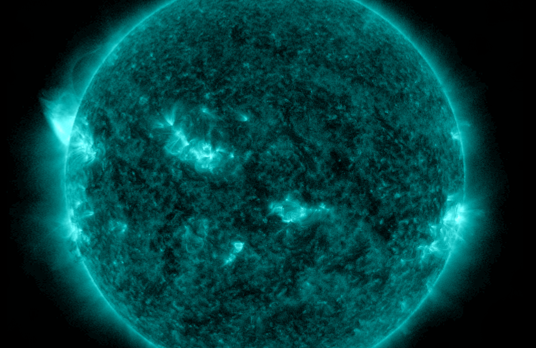
The CME became first visible in SOHO/LASCO imagery around 22:00UT, and had a plane-of-the-sky speed of at least 400 km/s. Obviously, it was directed away from Earth and did not affect the geomagnetic field.
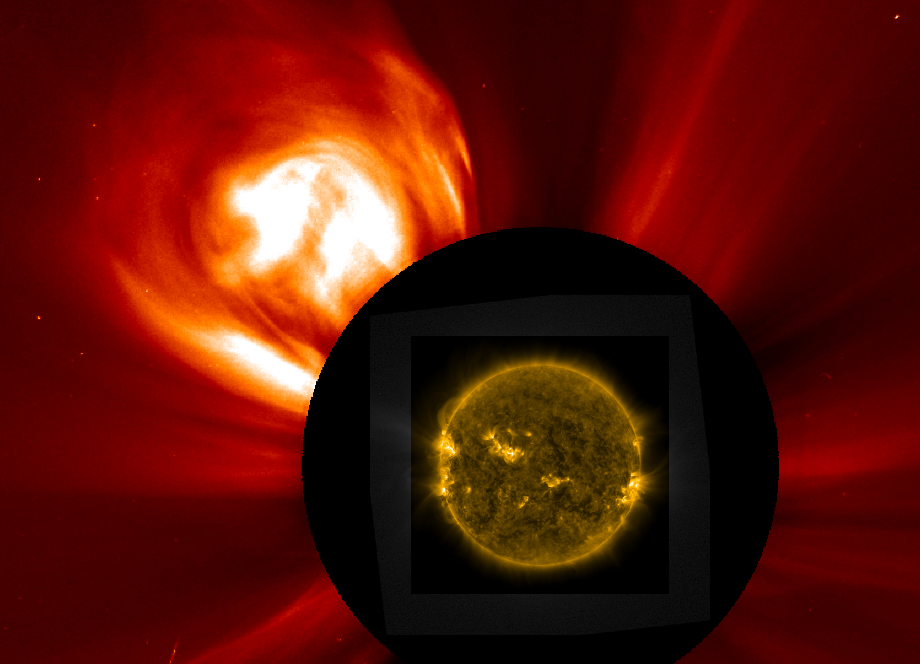
In the course of 27 June, the post-flare coronal loops put up a fascinating play as they were expanding and restructuring above the east limb. Around 15:00UT, these loops were standing at least 150.000 km above the solar surface.
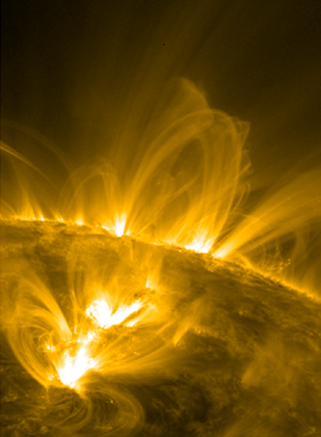
This movie at http://youtu.be/VJqj6Zx4JZ8 shows the features related to this backside eruption. It first shows the eruption as seen by STEREO-B in EUV and with the coronagraph. Then the CME and coronal loops are shown in combination movies of SOHO, PROBA2 and SDO. The clip ends with a 24 hour view on the restructuring coronal loops.
Credits - Images were taken from SDO (http://sdo.gsfc.nasa.gov/data/aiahmi/), SOHO (http://sohowww.nascom.nasa.gov/home.html), STEREO (http://stereo.gsfc.nasa.gov/), PROBA2 (http://proba2.oma.be/ssa), and Helioviewer (http://helioviewer.org/).
BIRA-IASB was founded in 1964 next to the Royal Meteorological Institute and the Royal Observatory of Belgium with a focus on science and engineering issues of space aeronomy. This is a reason to celebrate!
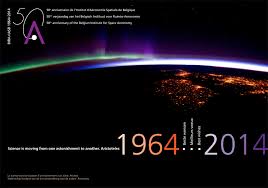
Check http://50.aeronomie.be
with 50 highlights from 1964 up to now, festivities, timeline
These days, there is a strong collaboration between the three sister institutes which is valorised within the Solar-Terrestrial Centre of Excellence covering the themes Sun-Space-Earth.
Som minor C-class flares occurred on June 23, 24, 26. From June 26, additional C-flaring activity was seen at the north-east limb, most of the activity could be probably linked to NOAA AR 2106 which got numbered from June 29 onwards.
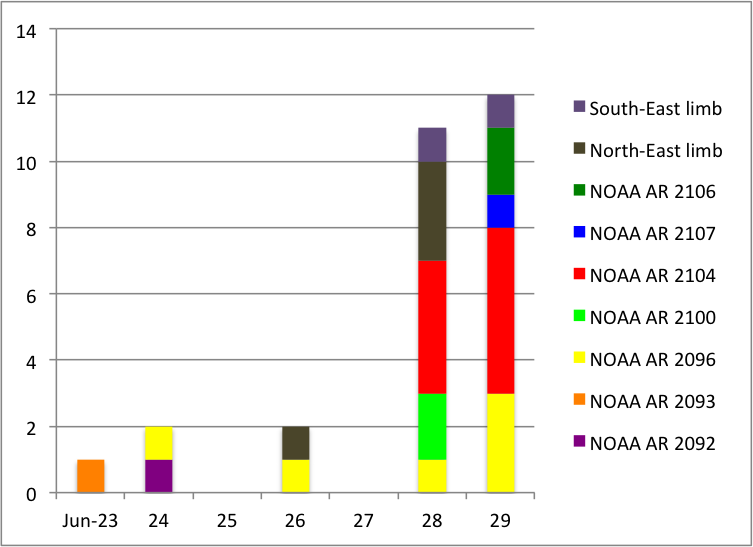
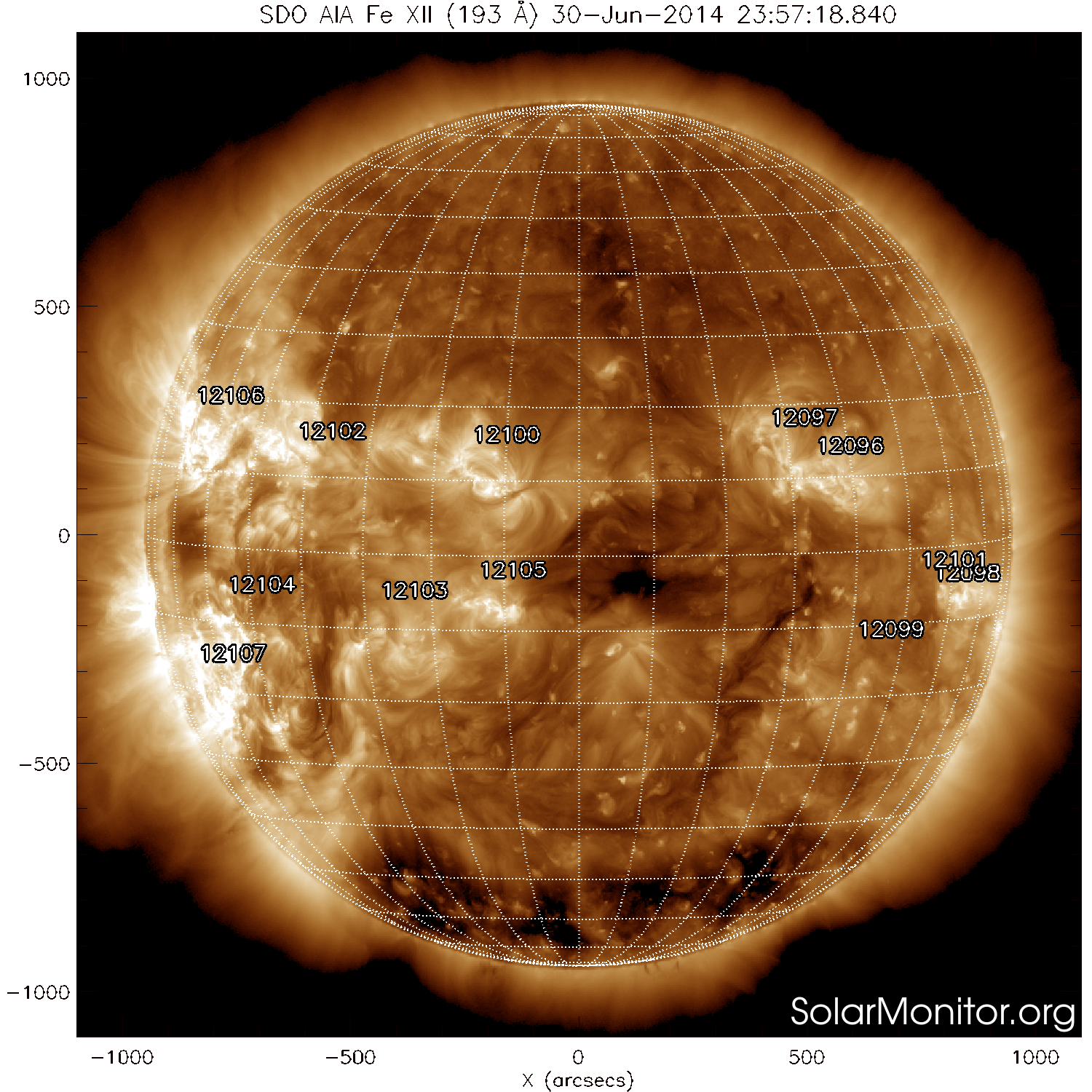
No Earth-directed CMEs were observed.
Quiet to unsettled geomagnetic conditions prevailed the full week. A shock was detected at ACE (at the L1 point) on June 23 at 22:00 UT, it corresponded to the expected arrival of a CME from June 19. The CELIAS/MTOF sensor on the SOHO spacecraft (also at L1) identified also an interplanetary shock at that time. The speed jumped to 400 km/s and the magnetic field intensity to 5 nT. It produced only unsettled geomagnetic conditions.
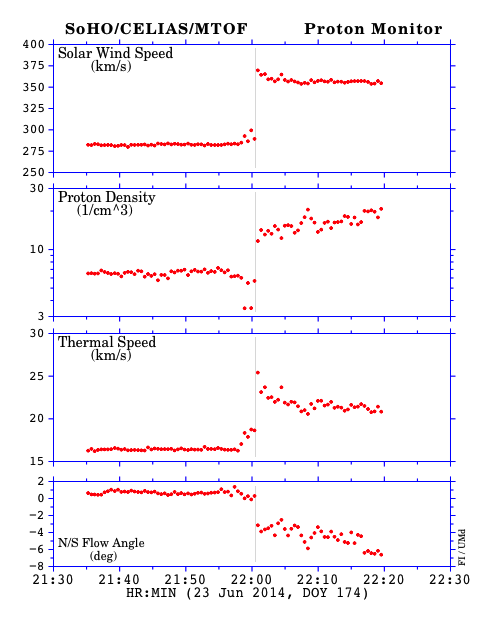
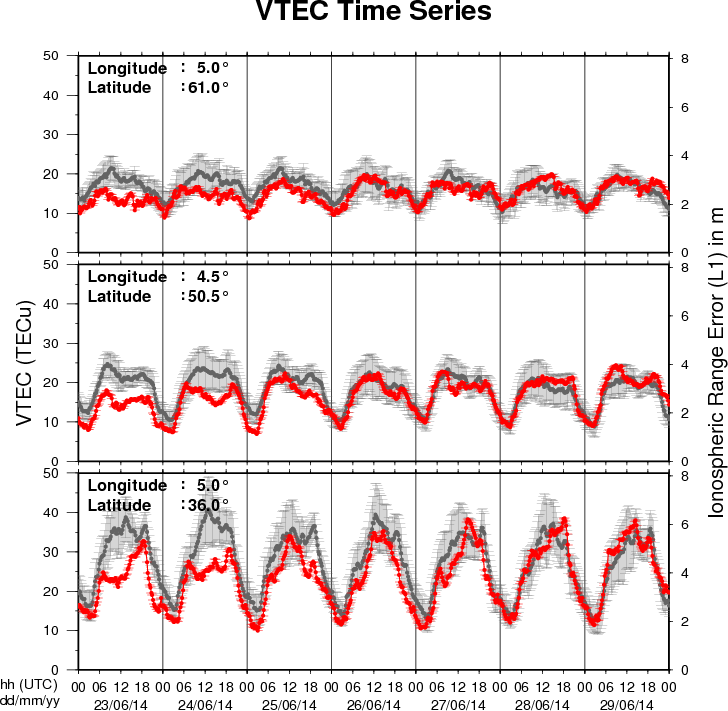
The figure shows the time evolution of the Vertical Total Electron Content (VTEC) (in red) during the last week at three locations:
a) in the northern part of Europe(N61°, 5°E)
b) above Brussels(N50.5°, 4.5°E)
c) in the southern part of Europe(N36°, 5°E)
This figure also shows (in grey) the normal ionospheric behaviour expected based on the median VTEC from the 15 previous days.
The VTEC is expressed in TECu (with TECu=10^16 electrons per square meter) and is directly related to the signal propagation delay due to the ionosphere (in figure: delay on GPS L1 frequency).
The Sun's radiation ionizes the Earth's upper atmosphere, the ionosphere, located from about 60km to 1000km above the Earth's surface.The ionization process in the ionosphere produces ions and free electrons. These electrons perturb the propagation of the GNSS (Global Navigation Satellite System) signals by inducing a so-called ionospheric delay.
See http://stce.be/newsletter/GNSS_final.pdf for some more explanations ; for detailed information, see http://gnss.be/ionosphere_tutorial.php
Presentation given during the STCE workshop Modelling of antennas and calibration of radio instruments.
http://www.spaceweather.eu/en/repository/show?id=526
Presentation given during the STCE workshop Modelling of antennas and calibration of radio instruments.
http://www.spaceweather.eu/en/repository/show?id=527
Presentation given during the STCE workshop Modelling of antennas and calibration of radio instruments.
http://www.spaceweather.eu/en/repository/show?id=528
Presentation given at the STCE workshop Modelling of antennas and calibration of radio instruments, June 2014.
http://www.spaceweather.eu/en/repository/show?id=529
Presentation given at the STCE workshop Modelling of antennas and calibration of radio instruments, June 2014.
http://www.spaceweather.eu/en/repository/show?id=530
Presentation given at the STCE workshop Modelling of antennas and calibration of radio instruments, June 2014.
http://www.spaceweather.eu/en/repository/show?id=531
Presentation given at the STCE workshop Modelling of antennas and calibration of radio instruments, June 2014.
http://www.spaceweather.eu/en/repository/show?id=532
Presentation given at the STCE workshop Modelling of antennas and calibration of radio instruments, June 2014.
http://www.spaceweather.eu/en/repository/show?id=533